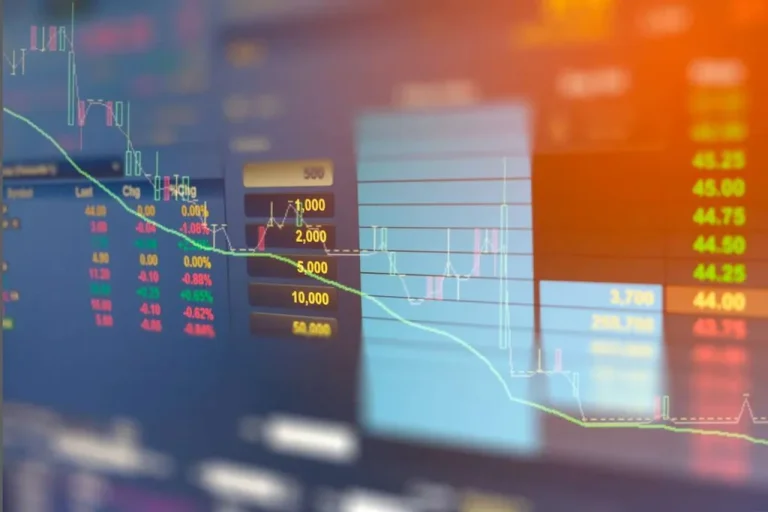Trading 101: What is Liquidity, and Why It Matters in the Crypto Sector
Content
When a stock is considered liquid, it means that there are a sufficient number of buyers and sellers in the market. This high level of trading activity allows investors to enter or exit positions without significant delay What is Crypto Liquidity or price fluctuation. In exchange for providing liquidity, participants are rewarded with additional tokens.
Register on Phemex and begin your crypto journey today
Liquidity in the stock market refers to the ease with which a particular Constant function market maker stock can be bought or sold in the market without significantly affecting its price. It also measures how quickly and efficiently investors can convert their shares into cash or buy shares without causing significant price fluctuations. Having sufficient cash or easily convertible assets is necessary to cover expenses, such as salaries and bills.
What Is the Crypto.com Exchange? An Overview for Beginners
- However, in a highly liquid market, orders are filled at a fast rate, which is convenient and advantageous to investors who trade regularly.
- These players often deal with substantial amounts of money and thus require high liquidity to avoid significant price slippage.
- In liquid markets, more buyers and sellers are active, so large trades can happen without causing big price swings.
- In these situations, crypto liquidity can drop, making it harder to sell digital assets without significant price slippage.
On the Crypto.com Exchange, cryptocurrencies can be traded for stablecoins or other cryptocurrencies. First, trading volume plays a significant role because it ensures a steady flow of assets, which improves liquidity when there is more activity and numerous buy and sell orders. A cryptocurrency exchange is a marketplace where traders come together to buy and sell (e.g., trade) cryptocurrencies or other digital assets at specific prices. Exchanges exist as a location where traders can transact without the need to find a buyer or seller willing to trade with them. When it comes to liquidity and the crypto https://www.xcritical.com/ sector, one of the most liquid digital assets is considered to be Bitcoin.

How We Picked the Best Crypto Exchanges and Apps
Crypto exchange trading is one of the most lucrative ways to invest in cryptocurrencies. It’s also among the simplest ones since it resembles buying and selling foreign currencies. However, those looking to earn from crypto exchanges should take the time to learn the principle on which they are based before venturing into investing. High liquidity levels contribute to price stability by reducing the impact of large buy or sell orders on the asset’s value.
Who are liquidity providers in the crypto market?
As participants in this exciting financial revolution, it is crucial to understand and monitor liquidity as we navigate the dynamic world of cryptocurrencies. When liquidity is high, transaction speeds are quick, and price slippage is minimal. Crypto liquidity plays a crucial role in stabilizing cryptocurrency prices. This stability then influences investor confidence and overall market health.

Without sufficient liquidity, large orders might dramatically swing the price, which could result in losses. Hence, liquidity ensures that traders can conduct their operations without unintentionally impacting the market. The increased number of trusted Bitcoin exchanges has allowed more people to trade their coins. There are many more cryptocurrency exchanges globally than there are regulated forex and other exchanges, which helps to increase frequency and trading volume, further enhancing its liquidity. Bitcoin liquidity is the ease with which the cryptocurrency can be bought or sold without affecting its price.

In summary, crypto liquidity is a key element that underpins the health and stability of the cryptocurrency market. It influences price volatility, market operation, and the attractiveness of a cryptocurrency to investors. Further, a high level of crypto liquidity can make a cryptocurrency more appealing to large institutional investors. These players often deal with substantial amounts of money and thus require high liquidity to avoid significant price slippage.
In other words, they help users understand the relative price of crypto assets to one another (i.e., how BTC equals how much CRO when looking at BTC/CRO). Liquidity, as it relates to cryptocurrency exchanges, is the ability to swiftly and readily convert cryptocurrencies into other assets or fiat currencies without substantially affecting their prices. The effect of price slippage is why it is important for exchanges to have sufficient market depth; otherwise, it becomes very costly for traders to transact. The higher the market depth (i.e., the quantities on either side of the order book), the lower the slippage. We can see that market orders are used by traders who demand immediate liquidity, paying the difference between the bid and ask price.
Liquidity risk in cryptocurrency refers to the danger of not being able to exit a position at favorable market prices. This often happens when market conditions shift suddenly—for instance, during a market crash or major event. In these situations, crypto liquidity can drop, making it harder to sell digital assets without significant price slippage.
A more comprehensive range of traders is drawn to trade when novel trading pairs are introduced, which increases trading activity. Liquidity can be increased by combining cryptocurrencies with stablecoins or fiat money to attract more conventional investors. It indicates the depth and volume of a cryptocurrency’s market by reflecting how simple it is to buy or sell a particular coin across several exchanges.
In the world of cryptocurrency, liquidity holds tremendous significance as it directly influences the success and stability of digital assets. At its core, liquidity refers to the ease with which a cryptocurrency can be bought or sold without causing significant price fluctuations. It serves as a vital indicator of market efficiency and plays a fundamental role in determining the overall health of digital asset exchanges. An imbalance in buy and sell orders, particularly during times of market instability, can cause fluctuations in liquidity. However, in times of stability, the crypto market will experience high liquidity because more people invest, meaning buy and sell orders are quicker to execute. This means that traders make quick and frequent trades while the spreads are thin.2.
Let’s break down how these regional platforms impact the broader cryptocurrency landscape and cover ways we might lessen the blow from regional sell-offs. Unlike traditional financial markets, where liquidity is often concentrated in a few major exchanges, the cryptocurrency market is characterized by decentralization. This decentralized nature means that liquidity is spread across numerous exchanges, creating both opportunities and challenges. Multiple challenges may arise from low liquidity on cryptocurrency exchanges.
Public companies are obliged to produce a balance sheet as part of their audited accounts, which shows their assets and liabilities in order of liquidity. In this instance, liquid assets refer to assets that are expected to be converted to cash within a year, whereas liabilities refer to financial obligations due within a year. Market liquidity describes the level of liquidity in a market for any given asset, such as stocks, real estate, or BTC.
It’s also a useful tool for crypto platforms as it provides a way to prove they are solvent i.e. possessing enough assets to cover trades and withdrawals. For example, one of the biggest benefits of trading on crypto exchanges with huge trading volumes is that they get enough orders to be able to match buyers and sellers without any difficulty. High liquidity ensures that investors can easily buy or sell shares at or near the current market price.
A clear stance by authorities on issues like consumer protection and taxation could interest more people in using Bitcoin, which would positively affect its liquidity. Crypto ATMs are known for their high fees, some of which charge up to 10% per transaction. Another thing to monitor is if the order book is replenished with new orders when existing orders are “taken” or executed. And the size of its “population” is what determines the amount of liquidity available.

Leave a Reply